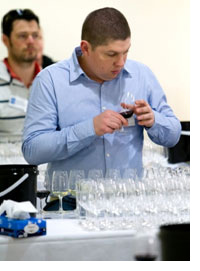Untimely spring and early summer rains have seen an outbreak of downy mildew infections in regions across south eastern Australia. In these conditions, fungal diseases such as botrytis and powdery mildew can also develop. Downy and powdery mildew damage can provide an avenue for Botrytis infection. An incidence of powdery mildew and Botrytis in fruit can compromise wine quality.
An eBulletin released on 11 November 2010 (click here), provided an update on the downy mildew outbreak including a summary of the important issues around control. A further update was released on 6th December 2010 (click here).
In the current situation, it is important to be thinking about processing options and strategies for dealing with Botrytis infected fruit (click here), as well as managing potential issues associated with higher levels of elemental sulfur and copper residues from spray applications. An article outlining strategies for detailing various fungal infections can be found here. It is essential to check for laccase activity (see Commercial Services for available analyses) when dealing with fruit infected with Botrytis.
The vineyard applications used to control fungal infections may contain elemental sulfur and copper (in addition to other active constituents) depending on the type of fungal infection(s) you are trying to manage.
Higher levels of residual elemental sulfur can lead to excessive hydrogen sulfide production during fermentation. For more information, refer to strategies for managing elemental sulfur (click here). Removal of elemental sulfur from red must is difficult, reduction can only be controlled through reducing application in the vineyard.
Copper can also accumulate on grapes through spray applications in wet years, however it is our experience that these levels will decrease considerably during fermentation and be removed with the lees. It is important that copper additions post-fermentation are informed additions, that is, the concentration of copper is known before performing any copper sulfate additions.
Further assistance
Further information can be accessed through the AWRI’s Information Services team by ordering from the below list.
Should you require further assistance, please call the AWRI’s Winemaking and Extension Services team on 08 8313 6600 or by email.
Reference list



